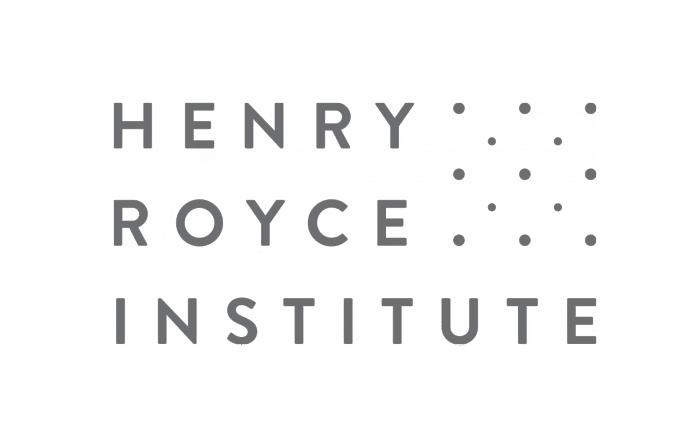Overview
This workshop aims to bring together XPS users to learn how to begin analysing XPS data. Through the demonstration of basic analysis principles, working with training datasets, and user-submitted examples, the content will help users of national XPS facilities develop understanding of best practice approaches to exploring their own data.
Members of the XPS technical team will lead sessions that detail example data measured in the facility, explain the physics required to constrain the analysis parameters as they arise, and to explore the aims of research experiments to add context to the analysis.
Format: In-person
Cost: £50
About HarwellXPS
HarwellXPS is the EPSRC National Research Facility for X-ray Photoelectron Spectroscopy, with a main site at the Harwell campus close to Diamond Light Source. The NRF is comprised of sites at The University of Manchester (equipment within the Royce), Cardiff University, Aberystwyth University, University College London, and also includes access to the B07 beamline at Diamond Light Source. The service also includes laboratory-based X-ray absorption spectroscopy and is lead by academic and technical experts in the field.
https://portal.harwellxps.uk/aboutharwellxps
Background and motivation
XPS provides quantified elemental and chemical state (atomic bonding) information from the surface and is used ubiquitously across advanced materials research. However, analysis of XPS data can be complex, often requiring detailed knowledge of the physical processes taking place to correctly interpret findings. The event aims to assist instrument users in understanding how to best approach their own data through shared examples and investigation.
Audience
The workshop is aimed for anyone who is making use of the XPS facilities to generate data in support of their research.
Workshop participants will need to bring their own laptop to fully participate in the workshop. A list of software and data required for the practical will be provided after registering.
Participants should already have access to their own XPS data or be close to generating data with XPS facilities.
Learning outcomes
- Utilise information on what XPS can provide, its limitations, and how the different variations of the technique could be used to answer different questions
- Describe the fundamental physics involved in the photoemission process, which then informs appropriate decomposition of XP spectra (particularly, constraints)
- Use CasaXPS to process, quantify, peak fit, and export XPS data
- Assess challenges in decomposing spectra and how this can impact the conclusions drawn from the analysis
- Locate reliable insights when processing XPS data, and assess accuracy of XPS interpretation in the wider literature
Sessions that will be covered
Fundamentals of XPS
- Photoelectric effect (why do peaks arise)
- Chemical state determination by XPS (why are peaks at the energies they are?)
- Peak area determination (why are peaks as big as they are?)
- Contributions to peak parameters (what affects peak FWHM / gaussian or lorentzian nature)
- Inelastic Mean Free Path (why is XPS surface sensitive?)
CasaXPS Live Demo
- Opening files, merging data, copy and paste
- Practice polymer dataset, get everything into one file
- Apply regions, apply components
- Participants then get to start trying to model a series of polymer datasets to match the theoretical quantification
Backgrounds and Lineshapes
- What affects the XPS background?
- How can we model this?
- What do the different backgrounds do?
- What should I use?
- What lineshapes should I be using?
Background and Lineshape Activity
- Applying tricky backgrounds
- Noisy data
- Data on uneven backgrounds
- Changing lineshapes
- Apply a few lineshape types to a large dataset to see which is more reliable
Complexities of metals and metal oxides
- Spin-orbit coupling
- Asymmetry
- How do we model these in CasaXPS?
- Why is this useful? Overlapping peaks!
Complex Data Activity
- Model clean metal spectrum (asymmetric fitting)
- Model simple doublets (MoS2, ZrO2)
- Model overlapping spectra with multiple species
- Mo metal vs MoOx
- Pt 4f vs Al 2p
- Ag 3d vs K 2s
- Au 4d vs Pd 3d (+ Ag 3d)
- Sr 3d vs P 2p
Horrible XPS
- Bad XPS in the literature
- Interactive game
Spectral Features that may ruin your day
- Auger-Meitner peaks
- Process
- Auger parameter
- Uses
- Multiplet splitting
- Causes
- Approaches to analysis
- Fingerprint analysis
- Auger parameter
- Using reference data
- Potential fitting solutions
- GS Free Ion Envelopes + Satellites
- Empirical methods
Advanced Spectra Activity
- Find the oxidation state of some Cu and Zn samples (a’)
- Find the oxidation state of some unknown TMOs from reference data
- Construct an empirical fit from some reference data to see how well it fits unknowns
- Ni metal, oxide, hydroxide
- Iron oxides
- Cobalt oxides
Planning Your Experiments
- What information do I want to learn?
- What instrument should I use?
- What do I need to know about my samples before measuring?

Organisers
- Andrea Izquierdo – Henry Royce Institute
- Ben Spencer– The University of Manchester
- Marek Nikiel – The University of Manchester
- Liam Dwyer – The University of Manchester
- Philip Davies – Cardiff University
- Mark Isaacs – University of London
- Robert Palgrave – University of London
- David Morgan – Cardiff University
- Arthur Graf – Cardiff University
Speakers
- Philip Davies – Cardiff University
- Mark Isaacs – University of London
- Robert Palgrave – University of London
- David Morgan – Cardiff University
- Arthur Graf – Cardiff University


